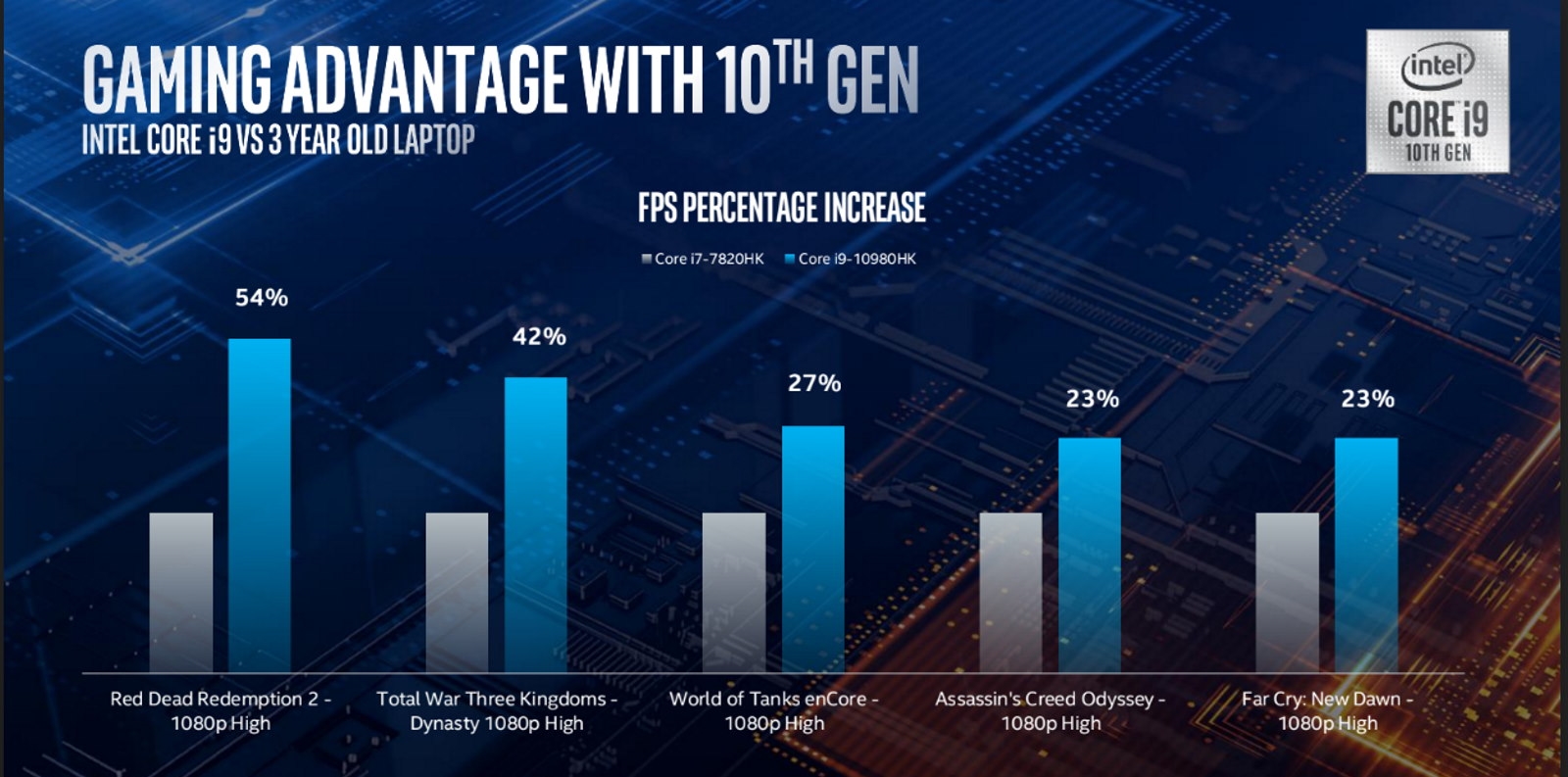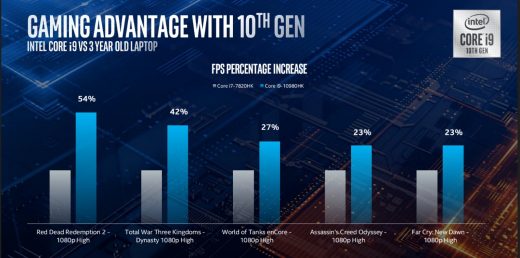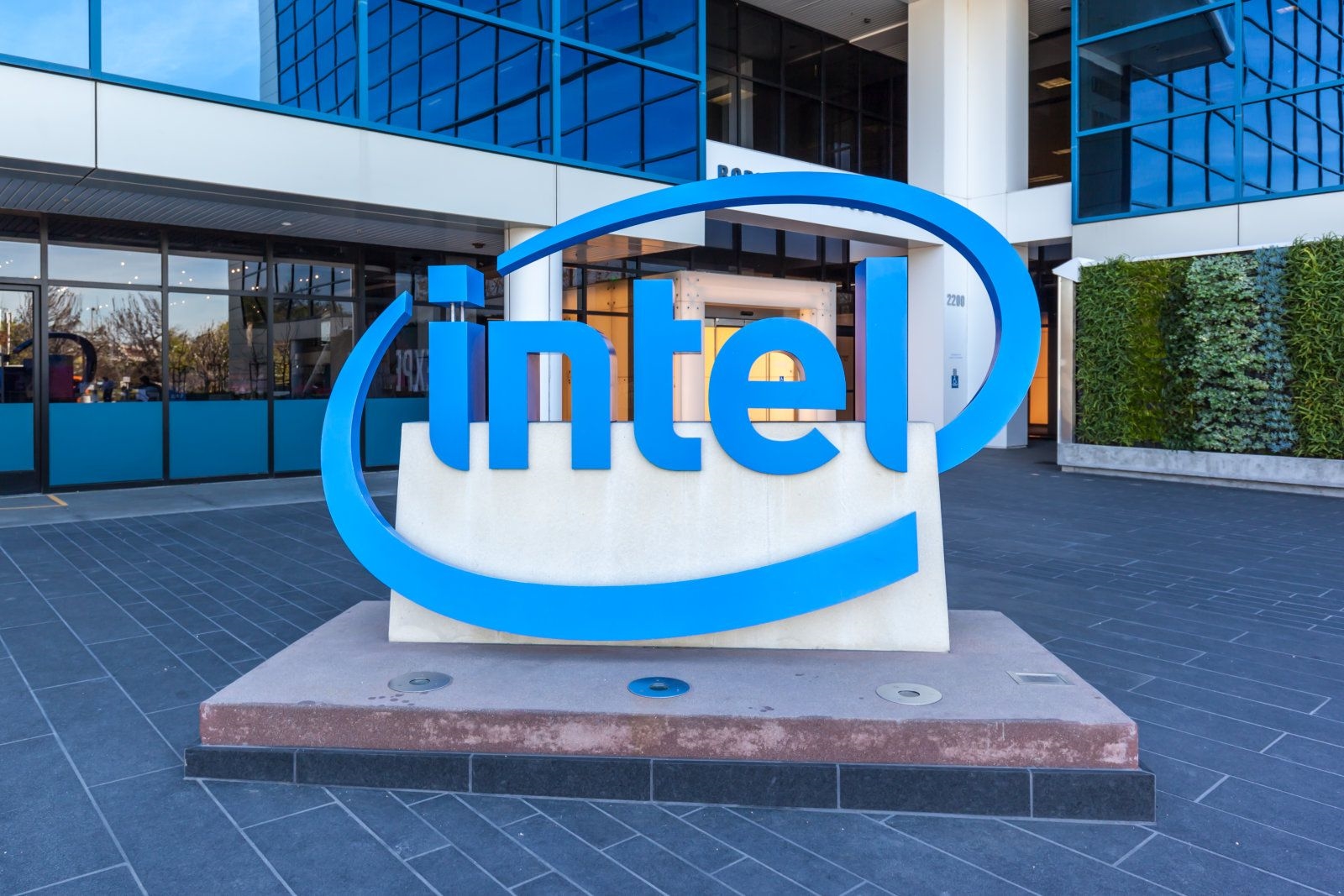Intel’s 10th-gen H-series laptop CPUs reach 5.3GHz
The 10th-gen H-series processors also include some useful new features, like Thermal Velocity Boost, which can bump your clock speed by 200MHz if the CPU temperature is below 65C. (That’s only coming to the i7 and i9 chips, unfortunately). There’s also a one-click overclocking tool called Speed Optimizer, and Turbo Boost Max 3.0 will push workloads to your chip’s fastest cores. Adaptix Dynamic Tuning will also help you eke out as much power as possible based on your system’s real-time thermal variables. Another nice bonus: All of the chips will support DDR4-2933 memory.
So where can you find these new H-series chips? Alongside Intel’s announcement, we’re also seeing new notebooks from Razer, ASUS, Acer. And naturally, NVIDIA debuted new RTX Super mobile GPUs as well. Expect to see a whole new crop of gaming laptops hitting shelves (and our eager reviewer hands) soon.

As usual, these H-series chips are meant for gaming and workhorse machines, not laptops where battery efficiency is key. You can expect around 44 percent better performance in Assassin’s Creed Odyssey in 1080p with high settings, compared to the three-year-old Core i7-7700HQ. And the new top-of-the-line Core i9 is 54 percent faster in Red Dead Redemption 2, compared to the i7-7820HK (there weren’t any mobile Core i9 chips three years ago). Reaching beyond 5GHz is a notable achievement, and it’s a nice deflect away from Intel’s reliance on its 14nm “Comet Lake” architecture, just like its last batch of powerful ultraportable CPUs.
Intel is competing directly with AMD’s new 4000 series Ryzen mobile processors, which also offer up to eight cores, but with a lower 4.4GHz maximum clock speed. AMD is using a refined 7nm architecture, which makes them more efficient power-wise. And AMD’s new chips also include up to 8 cores of Radeon Vega graphics, which can easily trounce Intel’s aging UHD graphics. But really, all of these processors are best suited for notebooks with dedicated GPUs, so it makes sense for Intel to skimp on that for now.
(26)




